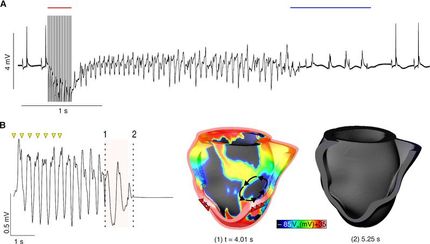Optogenetics: Light Regulates an Enzyme
New tool for cell biology: Würzburg researchers have developed a light sensor with an enzyme function that can be switched on and off with different light colours
Advertisement
The unicellular green alga Chlamydomonas reinhardtii has already given research a massive boost: One of its light sensors, channelrhodopsin-2, founded the success of optogenetics about 20 years ago.
In this technology, the alga's light sensor is incorporated into cells or small living organisms such as threadworms. Afterwards, certain physiological processes can be triggered or stopped by light. This has already led to several new scientific findings, for example on the function of nerve cells.
Now the green alga Chlamydomonas is once again setting an accent. Once again, it is its light sensors, the rhodopsins, that have added an instrument to the toolbox of cell biology.

Violet light triggers a signalling chain in the light sensor protein switch-Cyclop, blue or green light stops the chain. At the end, the production of the signalling molecule cGMP is regulated by the enzyme guanylyl cyclase (GC).
Shiqiang Gao
Light sensor produces the messenger cGMP
Researchers Yuehui Tian, Georg Nagel and Shiqiang Gao from Julius-Maximilians-Universität (JMU) Würzburg in Bavaria, Germany, have constructed a novel light sensor from two of the algae's rhodopsins. It has enzymatic activity and can be switched by two different light colours. UV or violet light leads to the production of cGMP, an important signalling molecule in the cell. A blue or green flash of light, on the other hand, stops the production of the signalling molecule.
The researchers present the new light sensor in the journal BMC Biology. They have given it the name switch-Cyclop.
Focus on other algal rhodopsins
Nagel's research group at the JMU Institute of Physiology is continuing to characterise the properties of the various rhodopsins from Chlamydomonas. The professor's team is cooperating closely with neuroscientists. The goal is to explore the possible applications of the light sensors.




























































